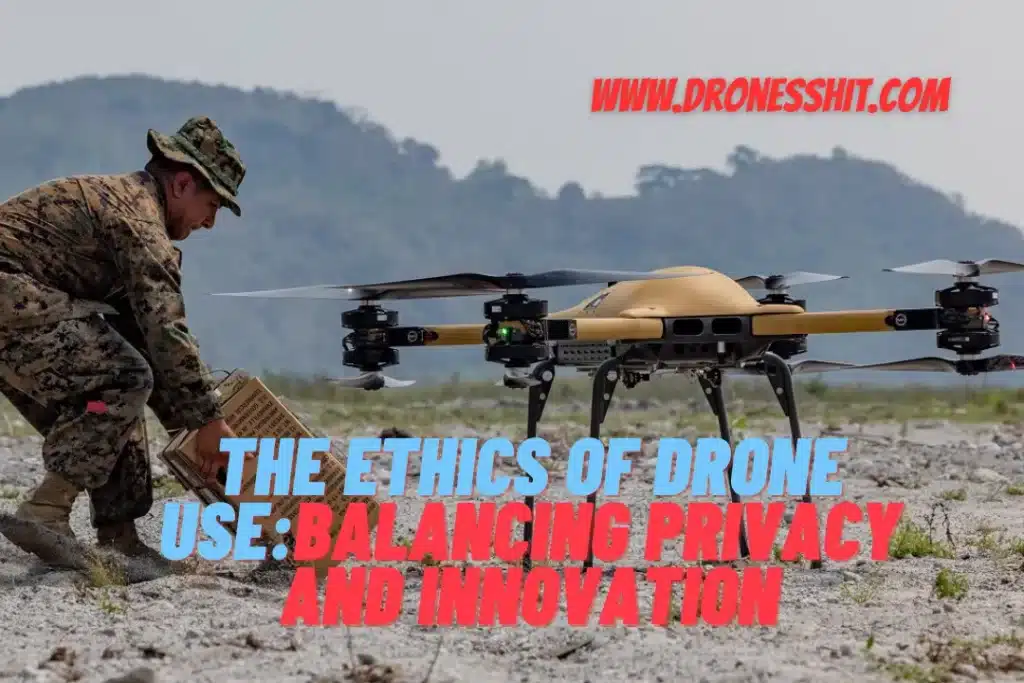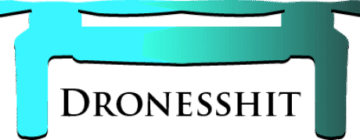
Introduction
Table of Contents
In recent years, drones have soared to new heights, transforming industries and capturing the imaginations of hobbyists and professionals alike. These unmanned aerial vehicles (UAVs) have revolutionized various sectors, from photography and agriculture to surveillance and emergency services.
However, with great technological advancement comes great responsibility, and the ethical considerations surrounding drone use have become increasingly complex.
This 3000-word article will explore the delicate balance between privacy and innovation in the realm of drone technology. We’ll delve into the ethical questions raised by the proliferation of drones, their impact on society, and the measures being taken to ensure responsible and ethical drone use.
Privacy Concerns
Certainly, let’s delve into each of the topics in detail:
1. Invasion of Personal Space
Drones have introduced new dimensions to the concept of personal privacy. They are equipped with high-resolution cameras that can capture images and footage from the skies, often without the subject’s consent. Here’s a closer look:
a. Unauthorized Surveillance:
- Drones equipped with cameras can capture images and videos of individuals without their knowledge or consent.
- This raises concerns about invasive surveillance and the potential for abuse.
b. Boundary Challenges:
- In the digital age, it’s increasingly challenging to define boundaries between public and private spaces.
- Drones can fly over private properties and potentially record activities taking place indoors, blurring the lines of privacy.
c. Legal Frameworks:
- Governments are struggling to keep up with the rapid advancements in drone technology and their implications for privacy.
- Legal frameworks are being developed to address issues of surveillance and invasion of privacy by drones.
d. Countermeasures:
- Various countermeasures, such as anti-drone technology and regulations, are being explored to protect individuals’ privacy rights.
- Some individuals have resorted to legal action when they believe their privacy has been violated by drones.
2. Surveillance and Data Collection
Drones have become tools of surveillance, employed by both public authorities and private entities for various purposes. The implications of mass data collection through drones are significant:
a. Public Surveillance:
- Law enforcement agencies use drones for tasks such as monitoring crowds during public events, search and rescue operations, and even criminal investigations.
- Concerns arise regarding the extent to which government agencies can surveil the public without infringing on civil liberties.
b. Corporate Use:
- Private companies and industries use drones for tasks like monitoring agricultural fields, inspecting infrastructure, and delivering goods.
- This raises questions about the extent to which corporations collect data and the potential for misuse.
c. Data Privacy:
- Drone-generated data, including images, videos, and location information, can be collected, stored, and analyzed.
- Data privacy concerns encompass how this information is managed, stored, and whether it can be tied to individuals.
d. Legal Safeguards:
- Legislation is being developed to regulate drone surveillance, emphasizing transparency and the protection of civil liberties.
- Courts and lawmakers are working to strike a balance between security needs and privacy rights.
3. Airspace Congestion
The proliferation of drones in urban areas has led to concerns about airspace congestion and its implications for individuals’ privacy:
a. Urban Drone Use:
- Urban areas are becoming hotspots for drone activities, including photography, delivery, and recreational flying.
- The increase in drone traffic raises the risk of privacy breaches.
b. Personal vs. Commercial Drones:
- The clash between personal and commercial drone use in densely populated areas is a growing concern.
- Personal drone operators may inadvertently intrude on others’ privacy while flying in crowded spaces.
c. Safety and Security:
- Congested airspace can also pose safety and security risks, as drones may collide with other aircraft or infrastructure.
- Balancing safety concerns with individual privacy is a complex challenge.
d. Geofencing and Regulations:
- Drone manufacturers are implementing geofencing technology to restrict drone flights in certain areas, such as airports and government buildings.
- Regulatory bodies are establishing guidelines for responsible drone use in congested airspace.
In conclusion, drones have brought new dimensions to privacy concerns, with implications for surveillance, data collection, and airspace congestion. Balancing innovation with privacy protection remains a complex and evolving challenge, requiring the cooperation of governments, industries, and individuals to ensure responsible and ethical drone use.
Ethical Use in Innovation
Certainly, let’s explore each of these topics in detail:
1. Positive Applications
Positive Innovation with Drones:
Drones have ushered in a new era of positive innovation with applications across various fields:
a. Disaster Response:
- Drones play a critical role in disaster response efforts. They can quickly survey affected areas, assess damage, and locate survivors.
- Examples include using thermal imaging drones to find trapped individuals during earthquakes or delivering medical supplies to disaster-stricken regions.
b. Environmental Monitoring:
- Drones are invaluable tools for environmentalists and researchers. They can monitor ecosystems, track wildlife populations, and gather data on climate change.
- They enable the study of hard-to-reach or dangerous locations, such as tracking deforestation in remote rainforests.
c. Wildlife Conservation:
- Drones aid in wildlife conservation efforts by monitoring endangered species, tracking poachers, and protecting habitats.
- They can collect data on animal behavior, migration patterns, and population health, assisting conservationists in making informed decisions.
d. Lives Saved and Environment Protected:
- Drones have the potential to save lives in critical situations, such as locating missing persons, delivering emergency medical supplies, or fighting wildfires from the air.
- They also help protect the environment by enabling efficient data collection for pollution monitoring, reforestation efforts, and disaster preparedness.
2. Industry Regulations
Government Agencies and Industry Associations:
Government agencies and industry associations collaborate to establish regulations and guidelines for ethical drone use:
a. FAA Regulations (USA):
- The Federal Aviation Administration (FAA) regulates drone operations in the United States. They set rules on drone registration, flight restrictions, and airspace usage.
- Regulations evolve to accommodate advances in technology and growing drone use.
b. International Collaboration:
- Countries worldwide work together to harmonize drone regulations and ensure consistent safety standards.
- Organizations like the International Civil Aviation Organization (ICAO) develop global guidelines for drone operations.
c. Industry Standards:
- Industry associations, such as the Association for Unmanned Vehicle Systems International (AUVSI), create ethical and safety guidelines for drone manufacturers, operators, and pilots.
- These standards promote responsible drone use and ensure safe integration into the airspace.
d. Shaping Responsible Operations:
- Regulations are instrumental in shaping responsible drone operations. They prioritize safety, protect privacy, and minimize the risk of accidents.
- Compliance with regulations helps build public trust in drone technology.

3. Ethical Decision-Making
Importance of Ethical Decision-Making:
Ethical decision-making is crucial for drone operators to ensure responsible and safe use:
a. Safety and Privacy:
- Ethical drone operators prioritize safety and respect privacy. They avoid flying near airports, sensitive government facilities, or private properties without permission.
- They take measures to prevent accidents and protect individuals’ privacy.
b. Training and Education:
- Training and education play a pivotal role in promoting ethical drone use. Certification programs and courses educate operators on best practices.
- This training includes understanding airspace regulations, privacy laws, and emergency procedures.
c. Examples of Initiatives:
- Organizations like the Drone Pilot Federation promote ethical drone use by advocating for safety, privacy, and responsible operation.
- Initiatives like “Fly Responsibly” campaigns encourage operators to be mindful of their surroundings and abide by regulations.
d. Public Perception:
- Ethical drone practices enhance the public’s perception of drone technology. Responsible operators foster trust and goodwill in their communities.
- Building a positive image is essential for the continued acceptance and growth of the drone industry.
In conclusion, drones have opened up a world of positive applications, from disaster response to environmental protection. Government regulations and industry standards ensure ethical drone use, prioritizing safety and responsible operations. Ethical decision-making, coupled with education and training, is crucial for fostering a culture of responsible drone use and building public trust in this transformative technology.
Case Studies
Certainly, let’s explore each of these topics in detail:
1. Drones in Journalism
Ethical Considerations in Journalism:
Drones have become powerful tools for journalism, enabling unique perspectives on news reporting. However, ethical considerations are paramount:
a. Privacy and Sensitivity:
- Journalists must balance the public’s right to know with individuals’ right to privacy when using drones to capture news stories.
- Ethical guidelines dictate that drones should not intrude into private spaces or capture sensitive images without consent.
b. Responsible vs. Irresponsible Use:
- Responsible drone journalism involves obtaining proper permissions, respecting no-fly zones, and adhering to industry guidelines.
- Irresponsible use includes invading personal privacy, flying in restricted airspace, or capturing graphic content without warning.
c. Real-world Examples:
- Responsible: Drones have been used to cover natural disasters, offering vital aerial views without risking journalists’ lives.
- Irresponsible: Instances of drones interfering with emergency responders or invading private spaces have raised ethical concerns.
2. Commercial Drone Deliveries
Impact of Commercial Drone Deliveries:
Commercial drone deliveries promise convenience and efficiency but also raise ethical considerations:
a. Privacy Concerns:
- Commercial drones often require access to private properties for deliveries.
- There are concerns about drones capturing images or data during deliveries, compromising individuals’ privacy.
b. Convenience vs. Privacy:
- The convenience of quick drone deliveries must be balanced with respecting individuals’ privacy rights.
- Companies must establish protocols to ensure data security and minimize intrusion.
c. Company Initiatives:
- Companies like Amazon and UPS have robust privacy policies in place.
- They are actively working on technologies like geofencing to ensure drones only operate in authorized areas.
d. Regulatory Compliance:
- Commercial drone operators must comply with regulations governing privacy, airspace usage, and data protection.
- Ethical operation is integral to obtaining and maintaining necessary licenses.
3. Law Enforcement and Drones
Ethical Dilemmas in Law Enforcement:
Law enforcement agencies use drones for surveillance, search and rescue, and crime prevention, raising complex ethical dilemmas:
a. Surveillance and Privacy:
- Drones are powerful surveillance tools, but their use can infringe on individuals’ privacy.
- Law enforcement must balance the need for public safety with privacy protections.
b. Accountability and Oversight:
- Ethical concerns center on accountability and oversight of drone use by law enforcement.
- Ensuring transparency and adhering to strict protocols are crucial.
c. Case Examples:
- In some cases, drones have played pivotal roles in locating missing persons or providing aerial views of crime scenes.
- Ethical dilemmas arise when drones are used for mass surveillance or without proper warrants.
Balancing Privacy and Innovation
1. Public Awareness:
- Public awareness campaigns can educate individuals about the responsible use of drones, privacy risks, and legal rights.
- Resources like “Know Your Drone Rights” materials can empower individuals to protect their privacy.
2. Technological Solutions:
- Technological advancements in drone detection and countermeasure systems can enhance privacy protection.
- These systems can alert individuals to nearby drones and, in some cases, block unwanted drone intrusion.
3. Role of Ethics Committees:
- Ethics committees within organizations and government agencies assess the ethical implications of drone use.
- These committees develop and enforce ethical guidelines, ensuring responsible drone operations.
In conclusion, drones bring immense potential for various industries, but they also pose ethical challenges, particularly regarding privacy and responsible use.
By adhering to ethical guidelines, promoting public awareness, and implementing technological solutions, society can harness the benefits of drone technology while safeguarding individual privacy and civil liberties.
Conclusion
As the use of drones continues to expand, the ethical dilemmas surrounding their operation will persist. Striking the delicate balance between privacy and innovation requires ongoing dialogue, responsible practices, and thoughtful regulation.
By considering the concerns and potential benefits of drone technology, society can harness its potential for the greater good while safeguarding individual privacy and civil liberties. It is in this ongoing discussion and ethical reflection that we will navigate the future of drone use responsibly and ethically.
